Wolffia globosa is a species of duckweed that is considered the world's smallest flowering plant. It contains an abundance of nutrition, boasting all the essential amino acids, bioavailable vitamin B12, omega-3 fats, and a host of antioxidants and minerals.
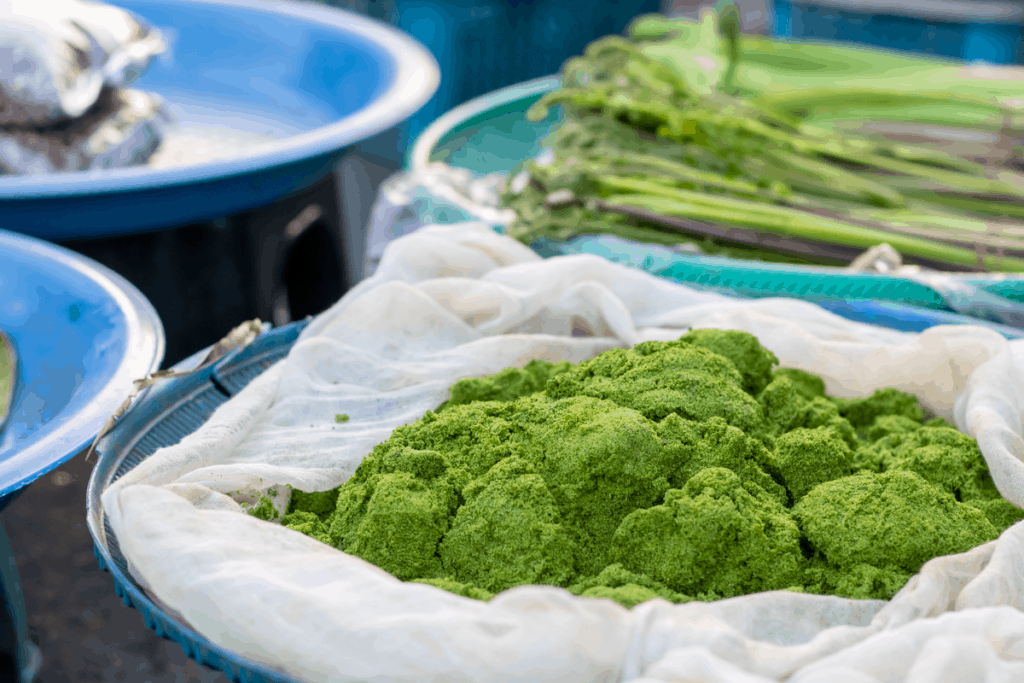
In this article, I will introduce you to all you need to know about Wolffia globosa and how you can incorporate it into different recipes.
Index
Jump to:
- What exactly is Wolffia globosa?
- Wolffia globosa history
- Wolffia Globosa could have big benefits for your health
- The Best Plant-Based Protein?
- Wolffia has Bioavailable Vitamin B12 absorbed well by humans
- National library of medicine trials
- Wolffia cultivation
- Health risks of consuming Wolffia
- Washing fresh Wolffia
- Cooking Wolffia: A Quick and Easy Method
- What does Wolffia taste, look, and act like?
- How to incorporate Wolffia Globosa into recipes?
- Where to buy Wolffia (Duckweed)
- Wolffia Globosa Recipes
- FAQ Wolffia globosa
- More plant-based proteins to discover
What exactly is Wolffia globosa?
Wolffia is a plant that may be small yet holds a ton of possibilities for your health, your nutrition, and the environment.
It is a close relative of water lentils or common duckweed, but Wolffia is the
smallest, most specialized genus in the duckweed family. In Thailand, it is
known as kai naam or phum.
- The world's smallest flowering plant
- It's rootless and stemless
- It floats in water
- It grows extremely fast (2-3 days)
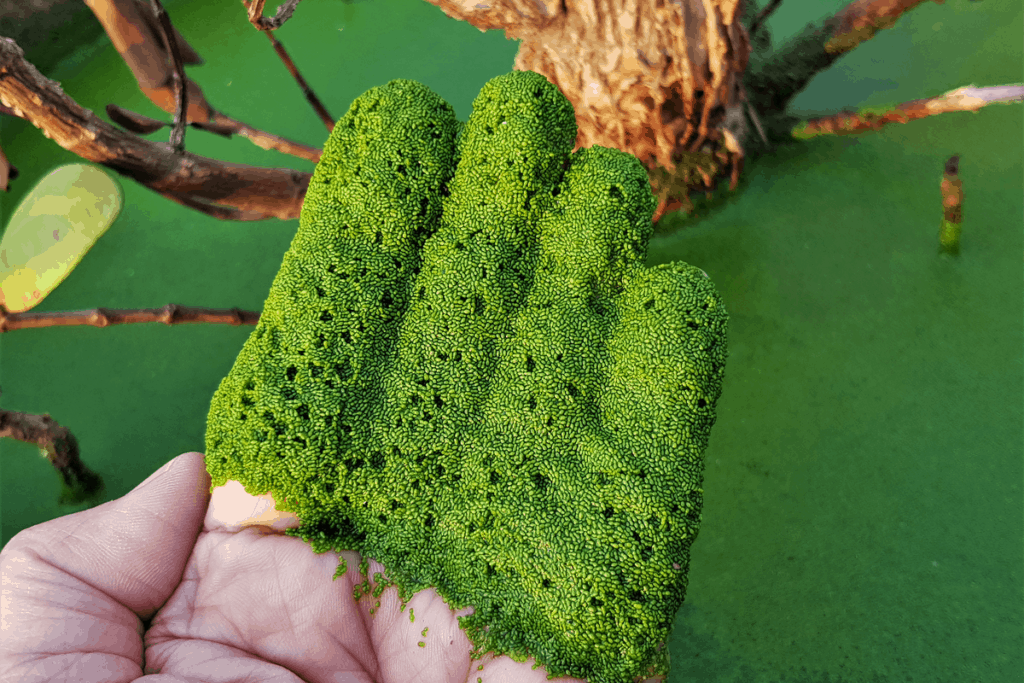
Wolffia globosa history
Wolffia globosa is native to Southeast Asia, but related species are also found
in other parts of the world. It grows in calm bodies of water and serves as
nutritious food for a number of species in the ecosystem.
For centuries, Wolffia has been known in Southeast Asia as a vegetable with
health benefits, due to its ability to take up nutrients and synthesize a wealth
of phytochemicals. In the North of Thailand, ''Kai Naam'' features in many local recipes.
Wolffia Globosa could have big benefits for your health
As Wolffia globosa is so nutrient-rich, this little green plant can have a surprisingly significant impact on your health.
Wolffia nutrition exceeds other superfoods in many ways. It's a great source of:
- Vitamin A, C, E, K
- Vitamin B1, B2, B3 (Niacin) B5, B6, B12
- Folate, beta carotene
- Lutein, zeaxanthin
- Phosphorus, potassium
- Calcium, Magnesium, Iron, Zinc
- PUFA's, Omega 3, omega 6
- Antioxidants
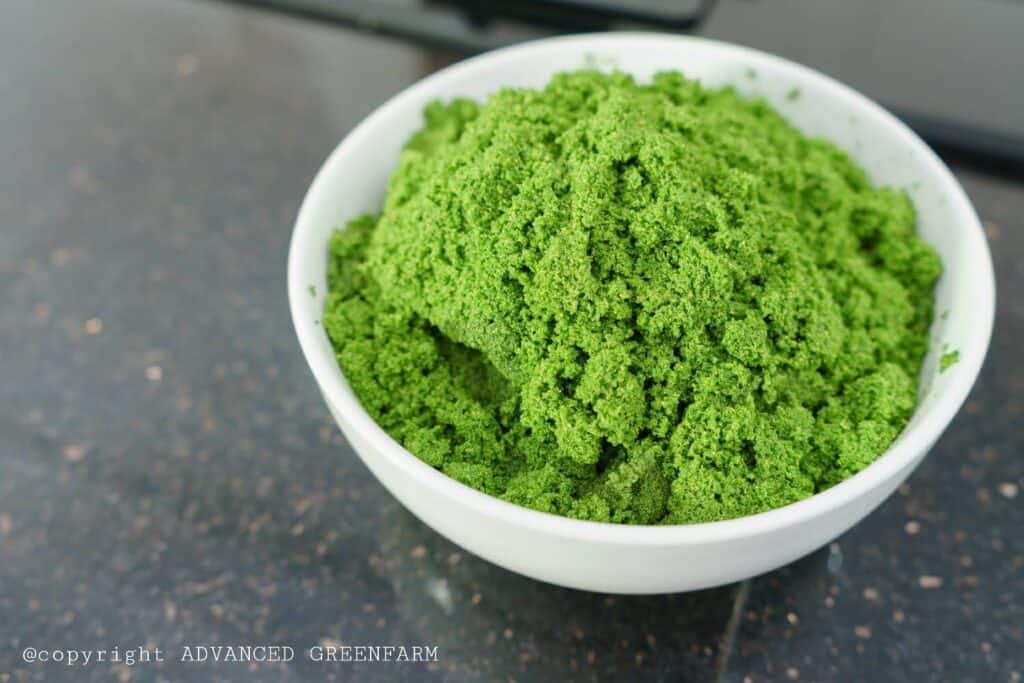
The Best Plant-Based Protein?
Protein content by dry weight:
- Wolffia globosa 40%
- Soy 36%
- Lentils 24%
- Quinoa 14%
Good Protein
Wolffia has an amino acid profile that matches meat protein.
- A complete amino acid profile
- High BCAA
- Easily digestible
- Lean protein (9:1 protein: energy ratio) with no cholesterol and with minimum carbohydrates

Wolffia has Bioavailable Vitamin B12 absorbed well by humans
This is a game-changer for plant foods, as it's generally understood that Vitamin B12 is only available from animal-based foods.
Amazingly, Wolffia also possesses bioavailable vitamin B12, making it one of the few non-animal sources of the vitamin. Bacteria and some fungi are the only lifeforms we know of that produce biologically active B12.
To find B12 in the tissues of plants hints that it was either taken up by the plant or somehow produced in the plants. (Like how B12-producing bacteria are in animal host's guts for instance).
Soil conditions
The poor soil conditions in modern days have led to a significant decline in B12-
producing bacteria around plant roots. However, it has been known that the Wolffia genus has a symbiotic relationship with many bacteria in the aquatic environment.
With Wolffia being such a prolific water plant, it is an
abundant and natural source of vitamin B12.
Here is the full scientific study and report on the Vitamin B12 availability in Wolffia
National library of medicine trials
A randomized controlled trial on Wolffia globosa - Mankai strain
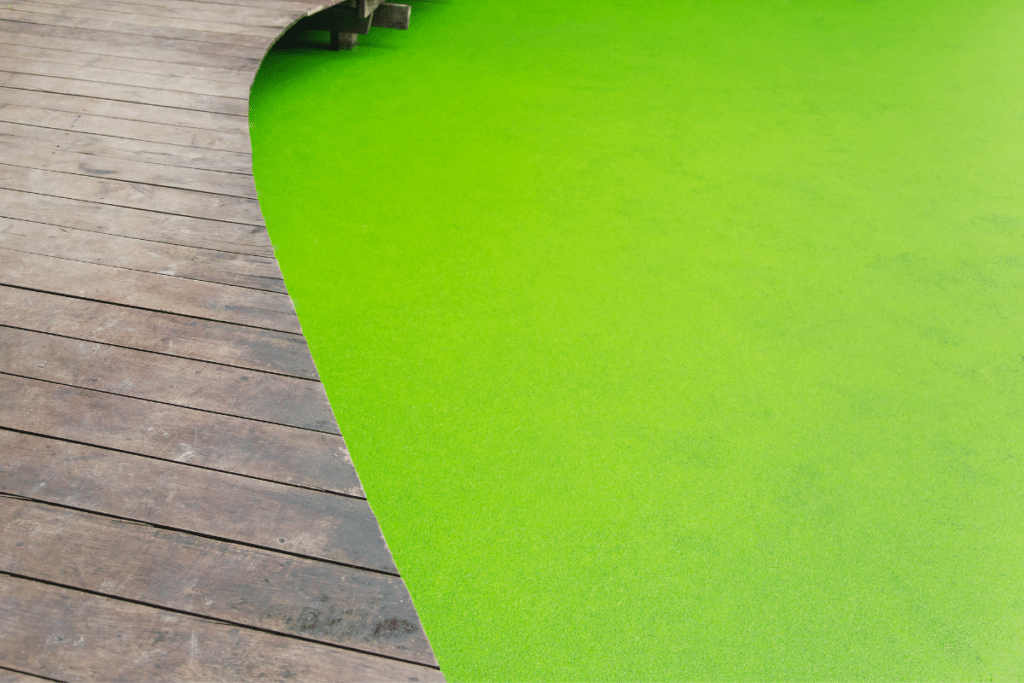
Wolffia cultivation
Wolffia naturally grows on the surface of calm, fresh waters such as ponds, lakes, and marshes. It is a tiny, oval-shaped plant with no leaves, stems, or roots. The body of the plant, a transparent green frond, is less than a millimeter wide.
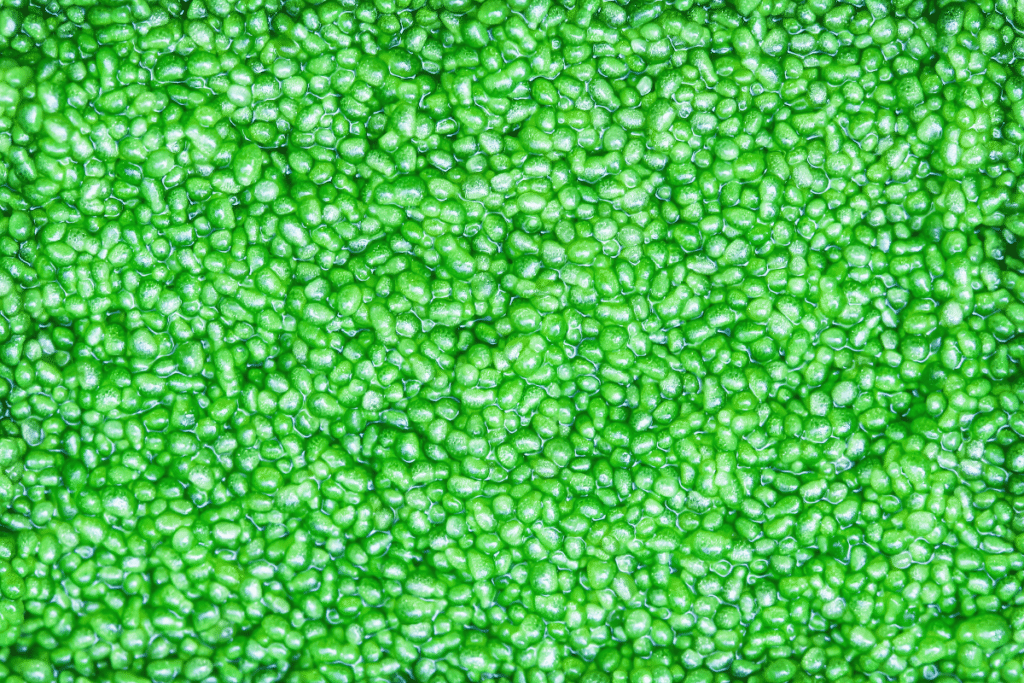
Health risks of consuming Wolffia
Wolffia globosa is safe to eat, with no known health risks reported. Multiple countries, including the USA, have approved it for human consumption. However, ensuring Wolffia stays a healthy addition to your diet depends on how it is grown and sourced.
Since Wolffia grows in water, it can come into contact with impurities, pollutants, and contaminants in its environment. The quality of the water and farming methods play a significant role in determining the plant's overall safety and nutritional value.
To minimize potential risks, always choose Wolffia from a reliable and trusted supplier. Look for sources that use semi-closed cultivation systems with clean, uncontaminated water. High-quality farms also monitor bacterial contamination regularly to ensure the product remains safe for consumption.
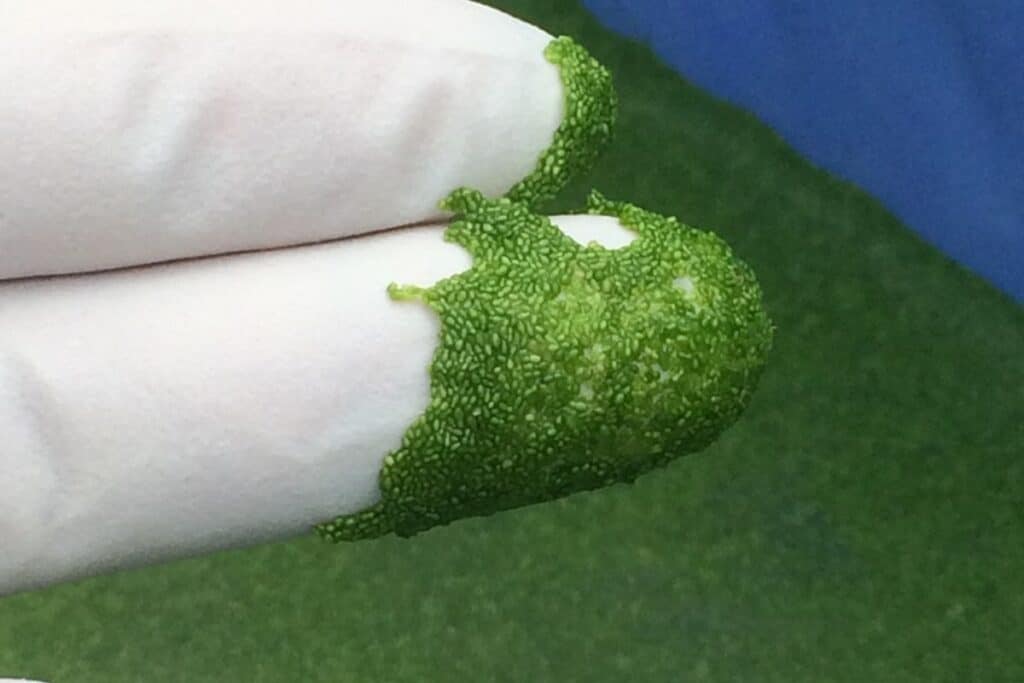
Washing fresh Wolffia
Cleaning and storing fresh Wolffia properly is essential to ensure it's safe to eat and retains its nutritional value. Follow these steps to prepare Wolffia for your recipes:
Wash Thoroughly
Start by rinsing fresh Wolffia under cold running water. Use a fine mesh strainer and gently swish it around to remove dirt, debris, and impurities. For extra safety, wash Wolffia with ozonized water. This method helps neutralize any harmful microbes or contaminants that may be present.
Refrigerate Immediately
After cleaning, transfer Wolffia to a clean, airtight container and place it in the refrigerator. Keeping it cold slows down microbial growth and preserves its fresh, vibrant quality. Refrigerate Wolffia as soon as possible after harvesting or buying it.
Know When to Cook It
Wolffia naturally carries microbial organisms, which can multiply over time. By the third or fourth day in the fridge, microbial levels may exceed safe limits for eating it raw. To stay safe, cook Wolffia after storing it for a few days. Light steaming, boiling, or stir-frying works well and ensures it remains nutritious.
Raw Consumption Tips
If you prefer to eat Wolffia raw, make sure to buy it fresh from a trusted source. Eat it as soon as possible-ideally within 1-2 days of harvesting or purchasing. This minimizes the risk of consuming harmful microbes.
Who Should Avoid Eating Raw Wolffia
Raw Wolffia isn't suitable for everyone. Sensitive groups, like children, pregnant individuals, or those with weakened immune or digestive systems, should avoid eating it raw. Cooking Wolffia makes it safer and easier to digest for these groups.
Cooking Wolffia: A Quick and Easy Method
To cook Wolffia, simply pour boiling water over it and let it sit for 2 minutes. Afterward, strain the Wolffia and immediately refresh it in cold or iced water to stop the cooking process. This quick blanching method helps preserve its vibrant green color, delicate texture, and nutritional value, making it perfect for salads, soups, or as a garnish in your favorite dishes.
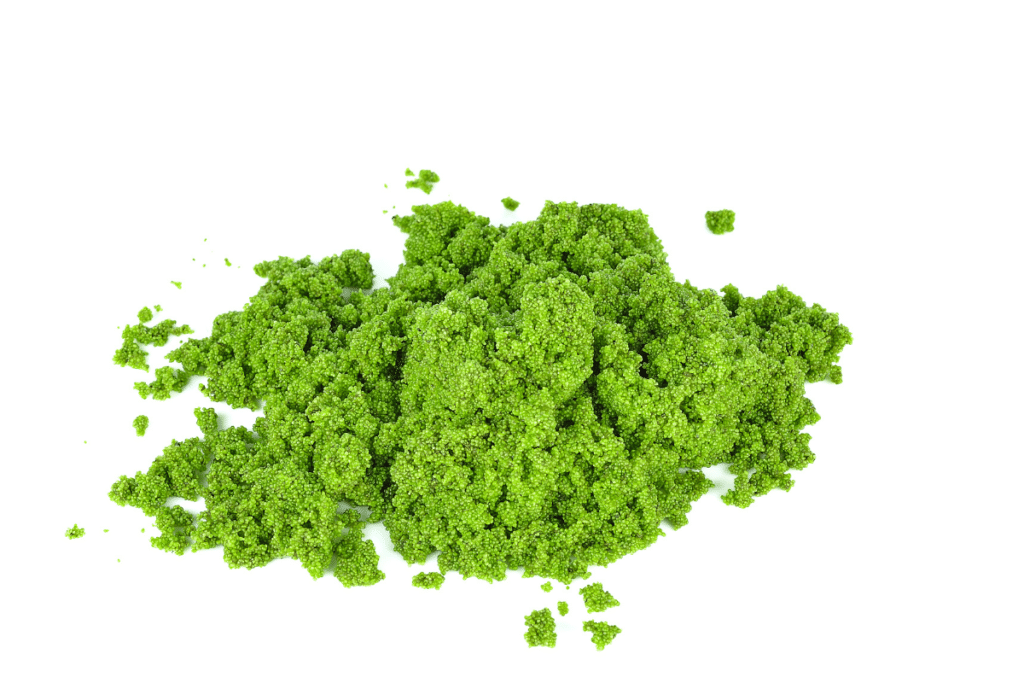
What does Wolffia taste, look, and act like?
Wolffia has a neutral flavor that lends itself to a multitude of culinary applications. The vivid rich-green-chlorophyll color brings any dish to life. It has a light breadcrumb-like texture.
When stirred into liquids, it acts like caviar, giving a beautiful finish to sauces and dressings.
Adding Wolffia to smoothies and purees provides a natural green color to the recipe without much of a taste, which allows for the chef's creativity to match with any other ingredient.
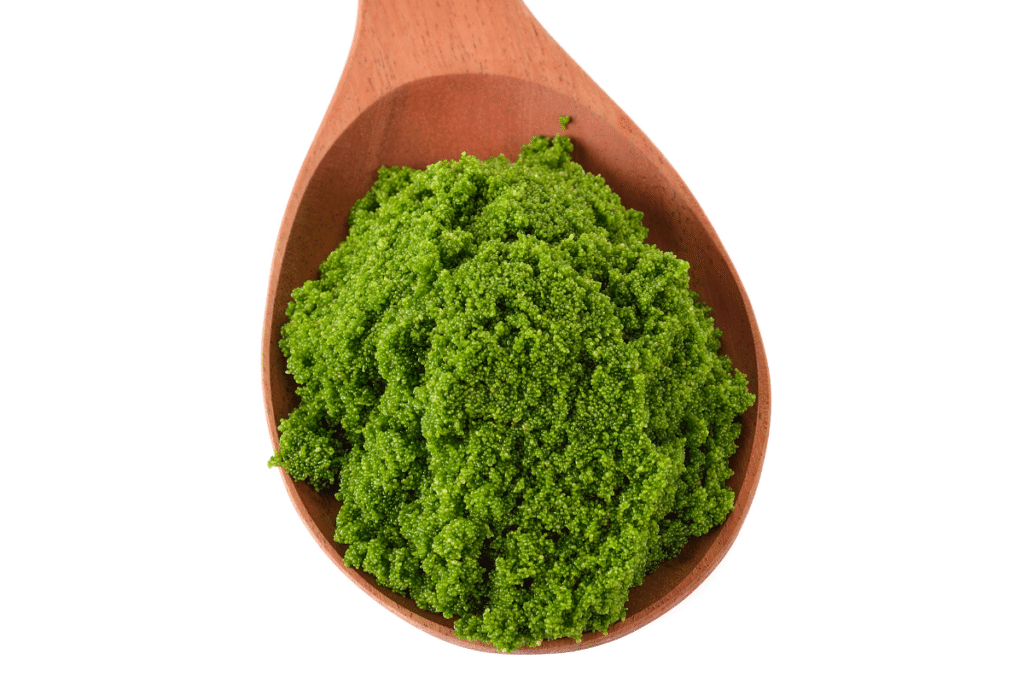
How to incorporate Wolffia Globosa into recipes?
It's relatively easy to incorporate Wolffia into different recipes. With a neutral taste, there are limitless possibilities for adding this wondrous superfood to boost your nutrition intake.
Here are a few ideas:
- Smoothies
- Smoothies bowls
- Salads
- Sauces
- Soups
- Dressings
- Ice-creams
- Sushi rolls
- Vietnamese rice paper rolls
- Falafels
- Bread
- Cakes
- Pancakes

Where to buy Wolffia (Duckweed)
I can recommend a great supply in Thailand. You may contact Flo Wolffia for availability and delivery.
Wolffia Globosa Recipes
Discover some of our Wolffia globosa recipes
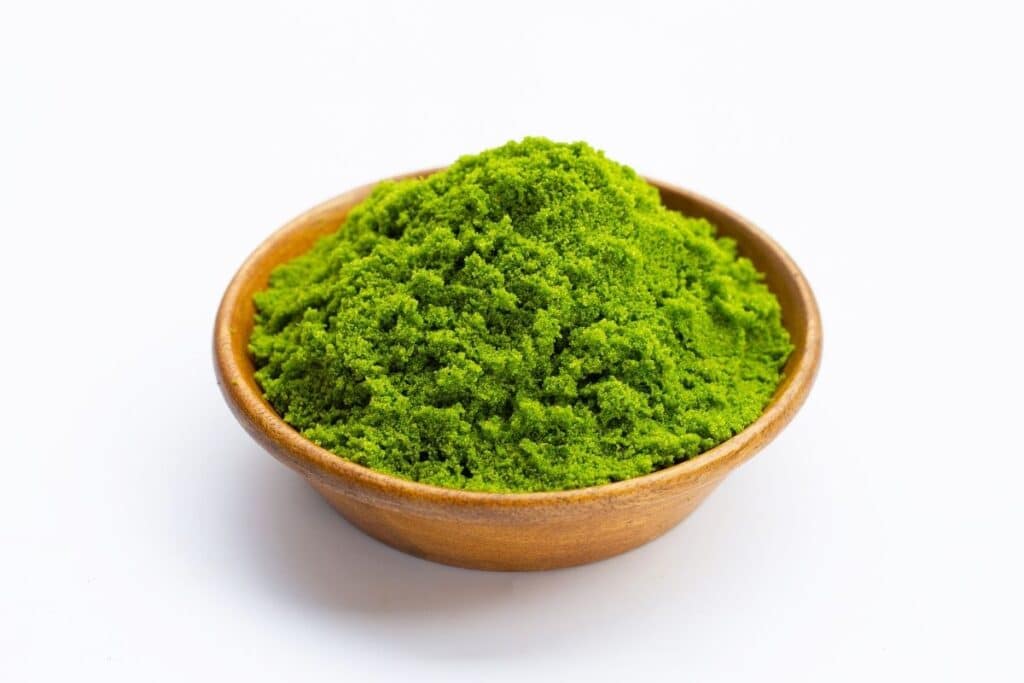
FAQ Wolffia globosa
Store fresh Wolffia in the refrigerator for up to 7-10 days. If eating raw, consume it within 3 days of harvest, ensuring it's from a trusted source and thoroughly cleaned. Raw Wolffia isn't suitable for toddlers or those with weakened immune systems. After 3 days, cook it before consuming for safety.
If you need to preserve fresh Wolffia for longer than 3 days, cook it first. Then, either cook-chill or cook-freeze:
Cook-chill: Store in the fridge for up to 10 days.
Cook-freeze: Freeze in smaller portions for up to 6 months or more.
When ready to use, defrost small quantities or blend frozen cubes directly into smoothies. Avoid refreezing thawed Wolffia, as this can impact quality and safety.
High-quality Wolffia should have a very mild or almost undetectable odor. If it smells unpleasant, discard it.
It has a neutral taste that lends itself well to limitless culinary applications.
Wolffia has been consumed for hundreds of years in Southeast Asia without any reported concerns. So far, there is no scientific evidence that Wolffia consumption has any negative consequences. In contrast to other duckweed species, Wolffia globosa does not contain high levels of calcium oxalate crystals. Wolffia is gluten-free and does not contain the most common allergenic proteins, so it should be regarded as hypoallergenic.
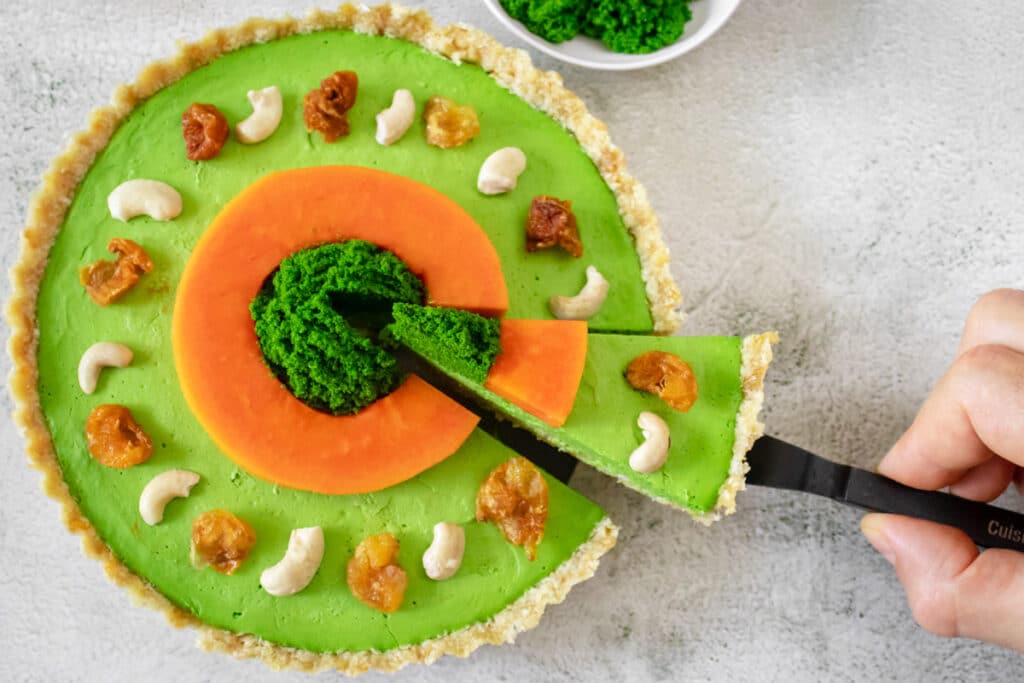


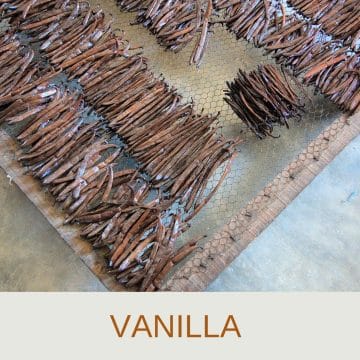


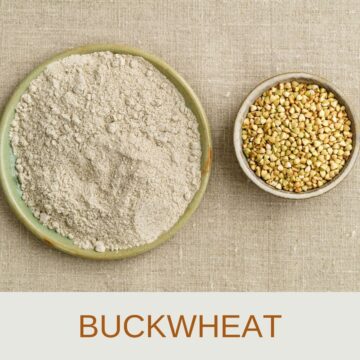
Adam Colloier says
I have a yearly infestation of this plant on my pond. It is a remarkable plant that can reproduce amazingly fast. I can scoop this plant from my pond in litterally wheelbarrow loads. I would like to start eating it. What is the flavor?
Jamie Raftery says
Hi Adam, Duckweed are remarkable plants indeed. Be careful, because not all strains of duckweed are edible. To consume it safely, it must be grown in clean water. I would not advise eating wild duckweed! I expect more farms will start to grow it commercially over the coming years.
glen heller says
I wish I had that problem. I have been checking out ponds for Wolffia. I have been looking all over for it. I'm located on long island in NY. Not sure where you are located but I'd definitely consider a trip to get some. I do travel. Great article. I would love to get a hold of some. I do have lemna minor.
Kim Gordon says
Can you recommend a source in the United States?
Jamie Raftery says
Hi Kim. At this moment, I don't know where to source in the USA. Hopefully, it will be available soon. Jamie
David Labadie says
Still looking for a reliable local source of Wolffia globsa in the USA.
Jamie Raftery says
Hi David, have you tried Mankai?
Kim says
Unnfortunately, Mankai shut down US operations Jan., 2022. I am also searching for a US source. Everything I can find is one of the other duckweeds.
Emika Ferriman says
Can you recommend a source in the United Kingdom?
Jamie Raftery says
Hi Emika. Currently, I'm unaware of any producers in UK.